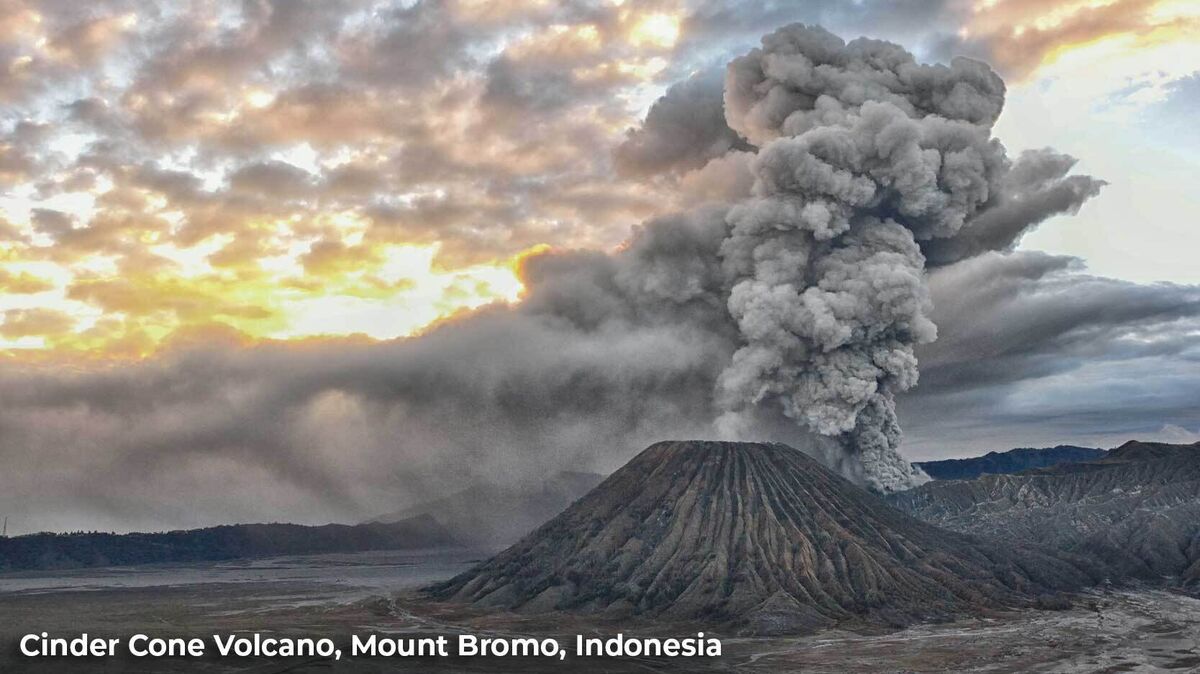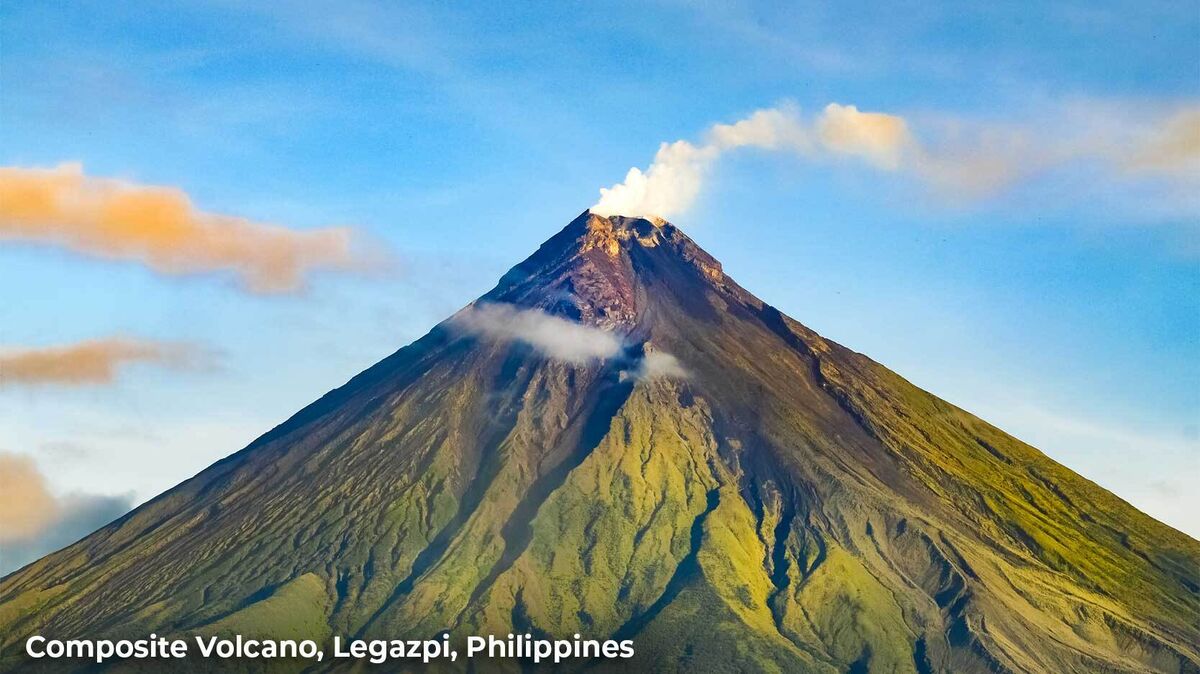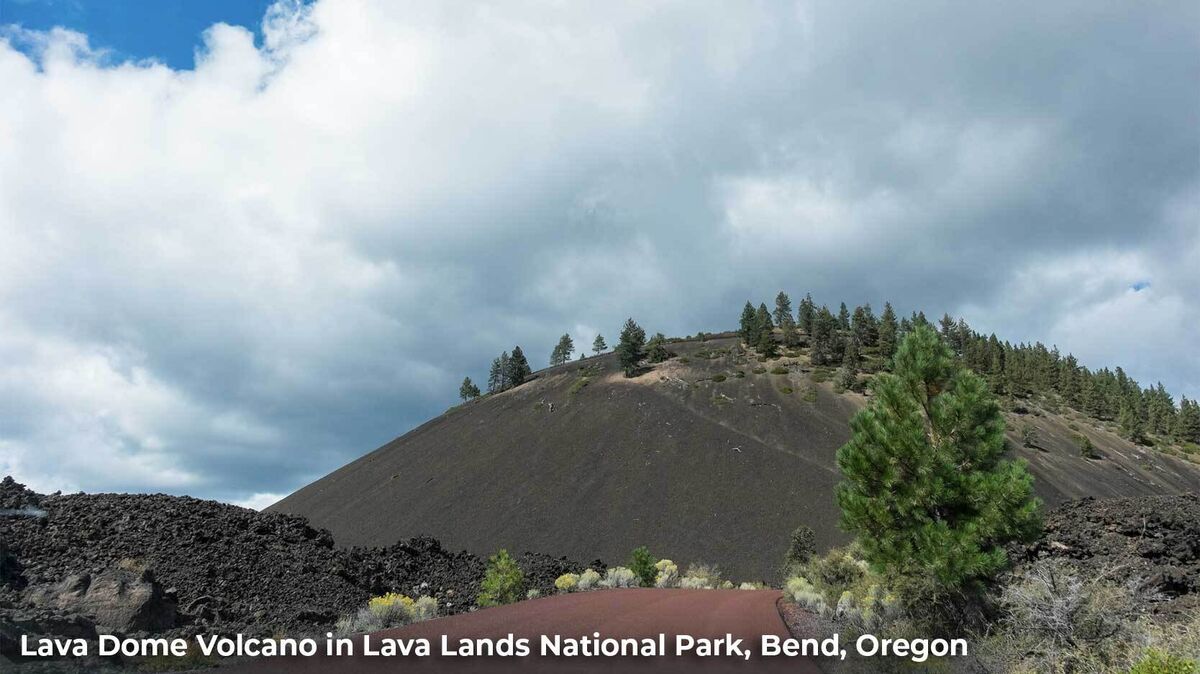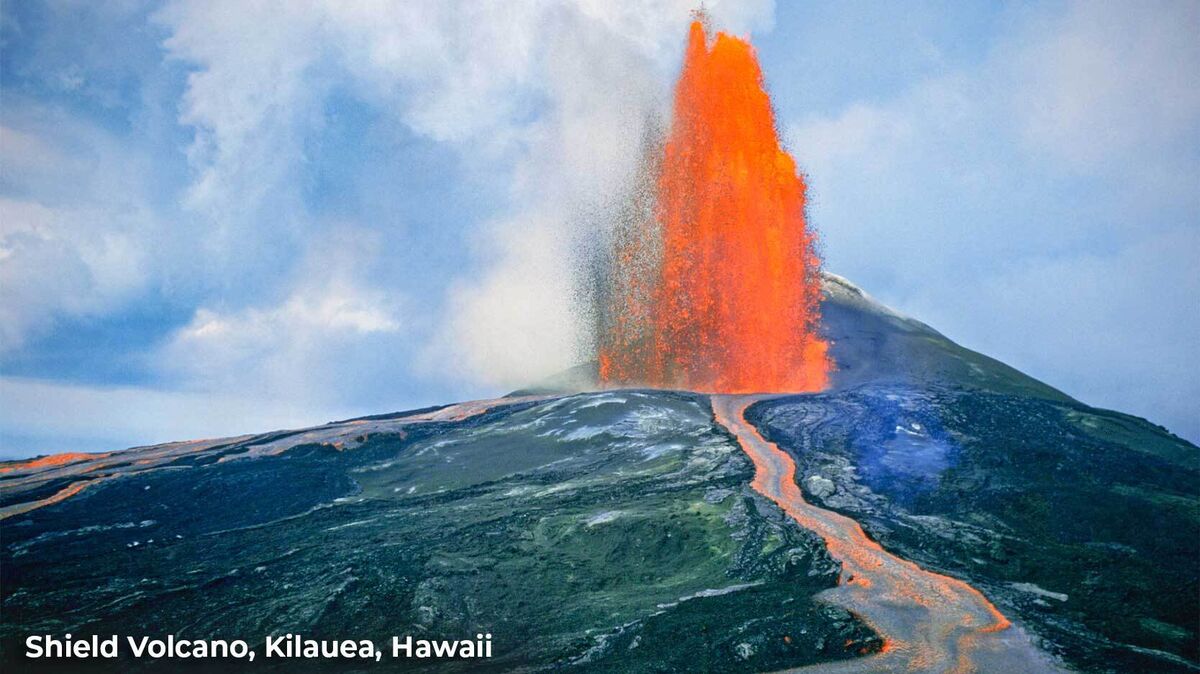
When you think of a volcano, you probably think of a mountain with a large hole at the top spewing lava and volcanic ash. But that's not always how volcanoes look or behave. Learn all about the four major types of volcanoes found around the world, and discover their unique characteristics.
Cinder Cones
Cinder cones, also called scoria cones, are probably what you think of when you hear the word "volcano." Cinder cones are named after the igneous rocks (called "cinders") that fall and form the cones after an eruption. They are the most common type of volcano on the planet.

The characteristics of cinder cones include:
- cone shape
- made of igneous rock
- typically symmetrical; can be asymmetric if wind was blowing during an eruption and rock landed primarily on one side
- relatively low altitude (300-1200 ft.)
- eject fragments of lava (called tephra) from one vent
- created by fallen rock and cinder that cool and form a bowl-shaped summit crater
- lava flows spread outward from the main vent
- build up over a period of months or years, depending on activity
Cinder cones are typically found as single volcanoes. However, they can also form around larger volcanoes as secondary parasitic cones. One of the most famous cinder cones in the world is Paricutin, which first erupted in 1943 and formed over nine years in Mexico.
Composite Volcanoes (Stratovolcanoes)
Unlike cinder cones, composite volcanoes are made of a variety of geological materials. They are larger and more violent than cinder cones but are not as common around the world.

The characteristics of composite volcanoes, also known as stratovolcanoes, are:
- cone shape with steep sides
- made of layers of hardened cinder, lava and ash
- most violent eruptions of all volcano types
- high altitudes (up to 8,000 ft.)
- erupts from one large vent or a clustered group of vents in a summit crater
- easily eroded by the wind when dormant
- built up over hundreds of years
Some of the most significant volcanic eruptions in history have occurred in composite volcanoes. Mount Vesuvius, whose eruption destroyed the neighboring city of Pompeii in A.D. 79, is a composite volcano, as is Mount St. Helens, which erupted violently in A.D. 1980 in Washington state.
Lava Domes
Lava domes are not as easy to spot as conical cinder cones and composite volcanoes, but they are still distinctive geological features. The lava in their eruptions is very thick and oozes out of the vent, rather than erupting into the air.

Characteristics of lava domes include:
- round dome shape
- can be smooth or include lava spines (spikes at the top)
- made of layers of thick, cooled viscous lava
- expands from within
- generally low altitude (up to 3,000 ft.)
- eruptions can be slow as lava squeezes through vents, or explosive when gas builds up underneath the dome
- often form within the craters of composite volcanoes
- built over hours, days or weeks (very large lava domes can take years to form)
Think of a lava dome as the result of a thick and sticky lava flow. Unlike other volcanic eruptions, the lava just doesn't flow very far. There is a large lava dome inside the summit crater of Mount St. Helens, caused by a slow and viscous lava flow that never made its way down the sides of the volcano.
Shield Volcanoes
Shield volcanoes are the largest type of volcano. They are wider than they are tall, and are called shield volcanoes because they look like the shield of a medieval knight.

Some unique characteristics of shield volcanoes are:
- wide, broad dome shape
- can have asymmetrical sides due to eruptions in vents along the side of the volcano (rift zones)
- made from sheets of cooled lava flows (basalt)
- non-viscous lava erupts from summit craters as well as rift zones
- the diameter of the volcano's base can be several miles wide
- can have very high altitude
- eruptions are generally gentle and gradual, not explosive
Mauna Loa, the largest volcano on earth, is 13,677 ft. above sea level. However, its base is on the ocean floor, making the volcano's total altitude over 28,000 ft. It is one of the Hawaiian shield volcanoes whose eruptions on a hot spot in the middle of the Pacific Plate created the Hawaiian islands.
Geology Rocks!
Astronomy may be what makes the world go 'round, but no one can argue that geology rocks. But volcanoes are only one part of the geological composition of our amazing planet. Learn all about the 3 main types of faults along and between tectonic plates. And if you're interested in more geological phenomena, check out these convection examples that occur in our natural world.